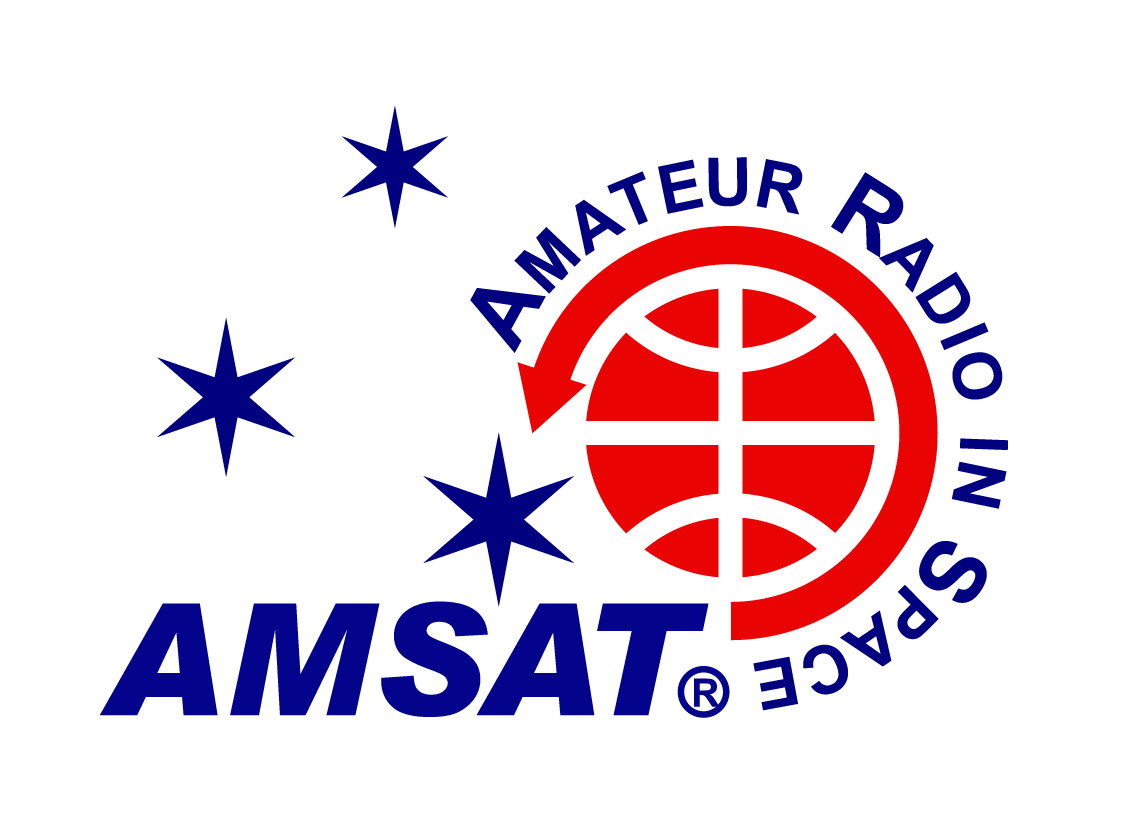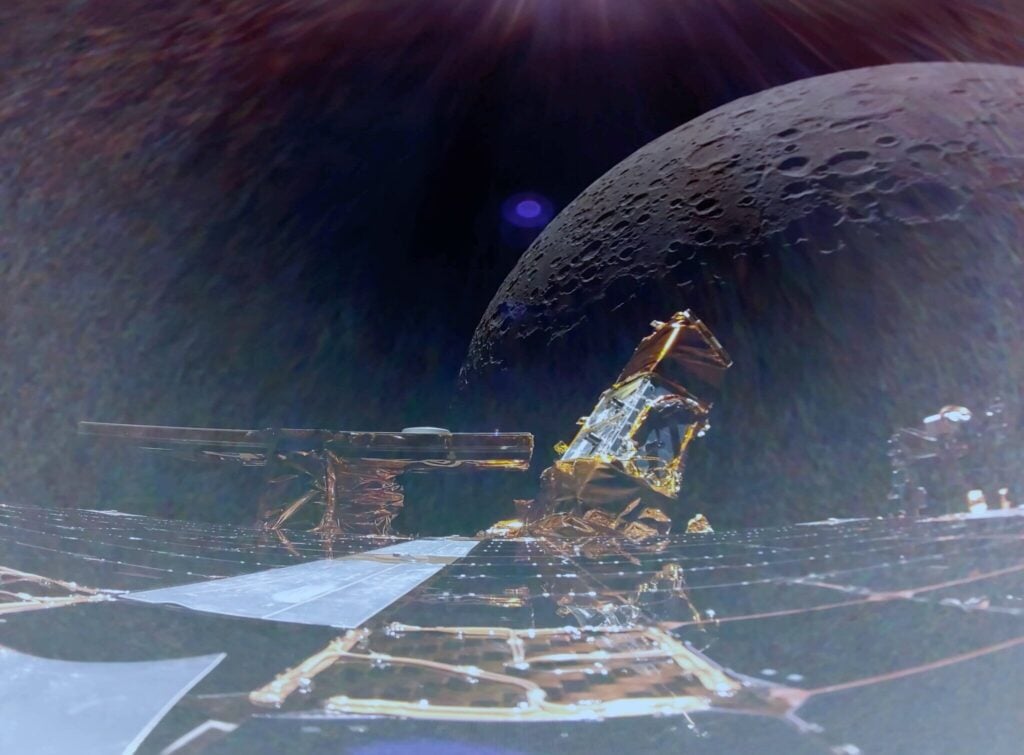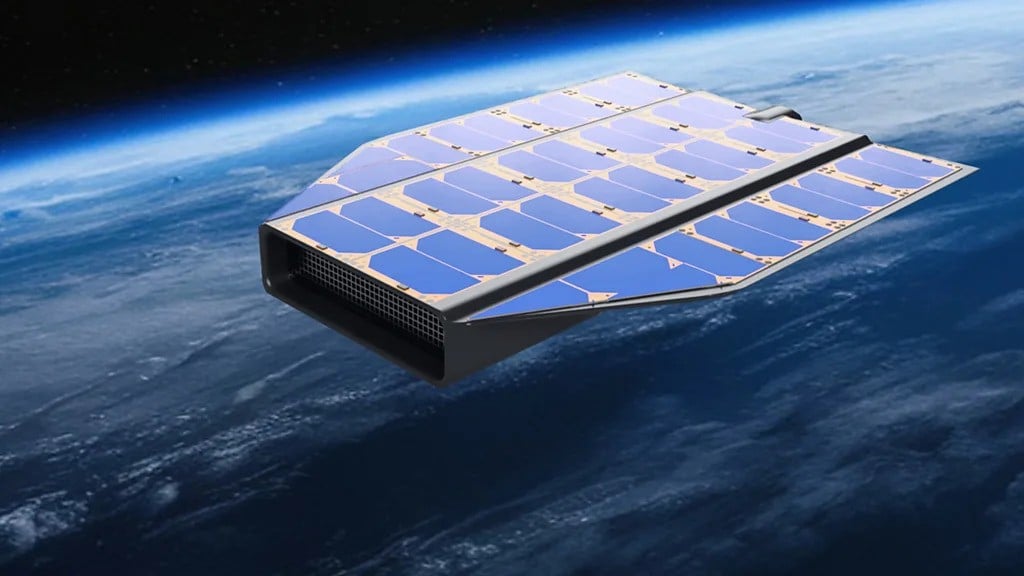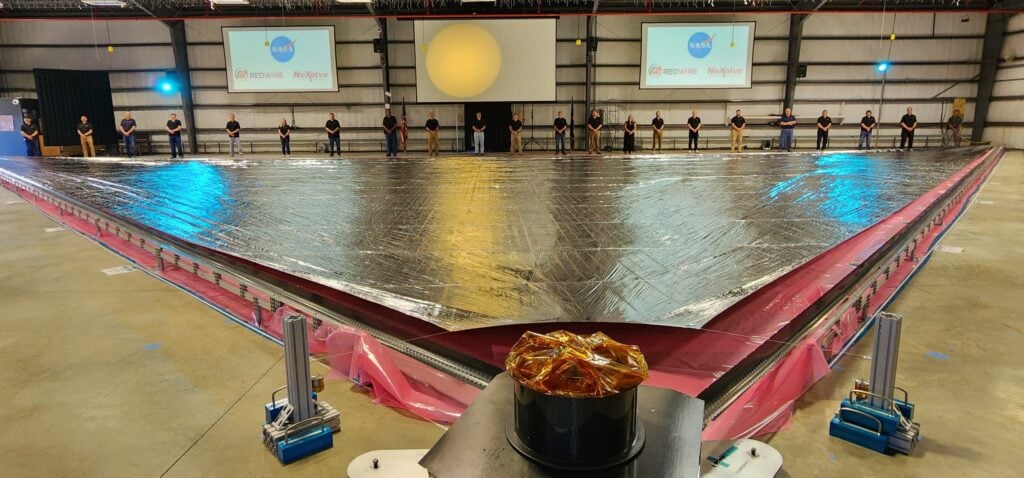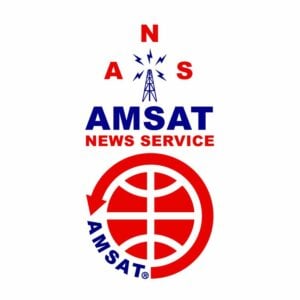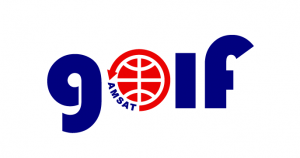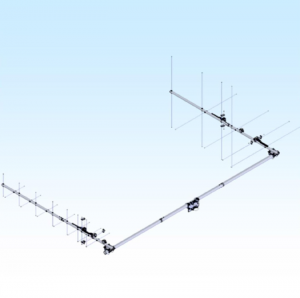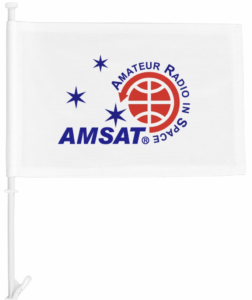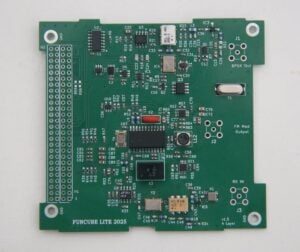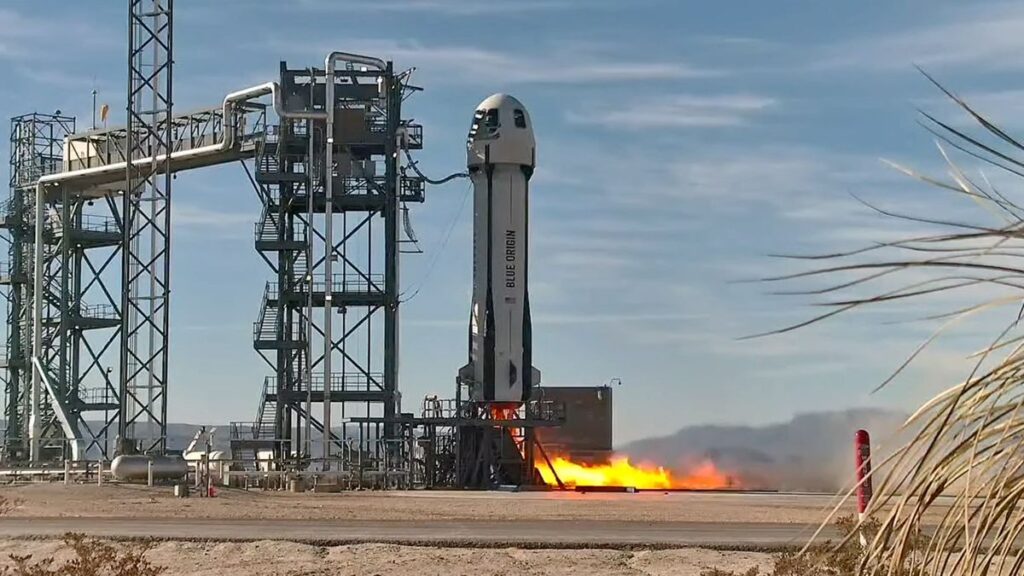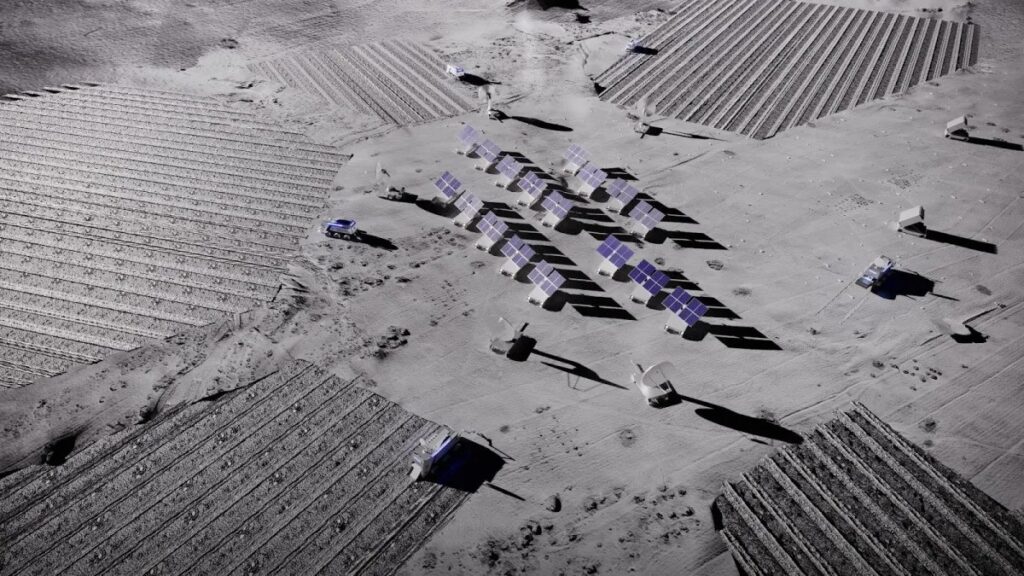In this edition:
* Amateur Satellites Scheduled for Launch This Week
* Nine New TEVEL Satellites Scheduled for Launch
* UVSQ-Sat NG Scheduled for Launch
* Intuitive Machines’ Lunar Lander Beams Back First Images of Earth
* SpaceX Delays Flight 8 of Starship
* GridMasterMap Satellite Top 100 Rovers March 2025 Rankings
* VUCC Standings February 2025
* Changes to AMSAT-NA TLE Distribution
* ARISS News
* Upcoming Satellite Operations
* AMSAT Ambassador Activities
* Satellite Shorts From All Over
The AMSAT News Service bulletins are a free, weekly news and information service of AMSAT, the Radio Amateur Satellite Corporation. ANS publishes news related to Amateur Radio in Space including reports on the activities of a worldwide group of Amateur Radio operators who share an active interest in designing, building, launching and communicating through analog and digital Amateur Radio satellites.
The news feed on http://www.amsat.org publishes news of Amateur Radio in Space as soon as our volunteers can post it.
Please send any amateur satellite news or reports to: ans-editor [at] amsat.org
Sign up for free e-mail delivery of the AMSAT News Service Bulletins via the ANS List; to join this list see: https://mailman.amsat.org/postorius/lists/ans.amsat.org/
Amateur Satellites Scheduled for Launch This Week
A SpaceX Falcon 9 rocket will launch a dozens of satellites on the company’s 13th smallsat rideshare mission to a sun-synchronous orbit. The launch is currently scheduled for Tuesday, March 4.
Among those satellites is HADES-ICM 1.5 PocketQube satellite main mission is to act as a FM voice repeater. It can also repeat FSK derived modes like FT-4 and FT-8.
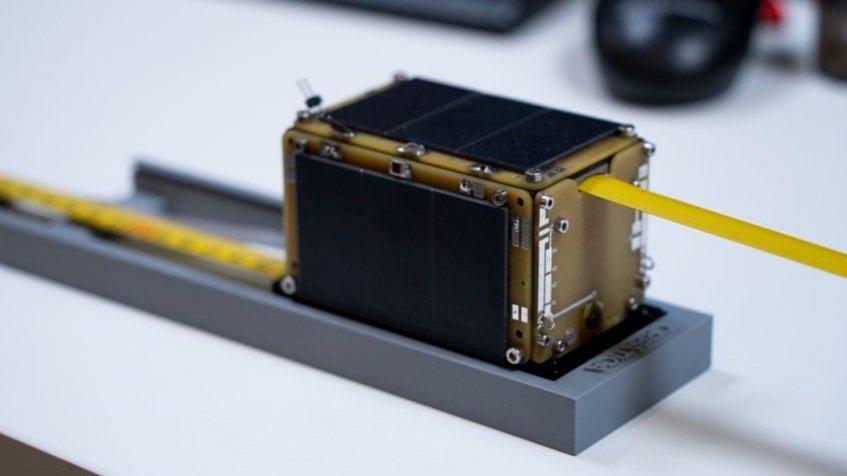
As there is a small empty space available, it will be used to carry an experiment by Smart IR/Graphene Engineering Innovation Centre, GEIC University of Manchester (UK) consisting in a very low power active radiator to be tested on space conditions. The data for this experiment will be transmitted in a specific data packet in the telemetry. This experiment is the same as the one in HADES-R [now SO-124 — see ANS-054]. This experiment will be delivered to AMSAT EA for integration and will be operated by AMSAT-EA, being all its data public and open.
Engineering and manufacturing support for this mission is carried out with the help of private sector companies and universities, but AMSAT-EA will be the only operating organization.
icMercury is a company also supporting the mission. It will develop ground tracking software for the satellite. Telemetry will send some FSK English formatted text messages, part of a history, to be collected as a challenge.
HADES-ICM will offer licensed radio-amateur around the world the opportunity to relay FM voice and AX.25 / APRS 300 / 1200 bps communications. FSK derived transmissions and modes like FT-4 and FT-8 are also supported. As an improvement from previous missions, maximum power is now 0.25W when battery is charged (the amplifier uses battery energy), allowing easier QSOs with handheld antennas like Arrow or Elk and less sensitive receivers.
The satellite will also transmit telemetry with its status and CW messages. This all will be achieved by implementing a SDR based repeater. The FM / FSK repeater will be available all time and opened by squelch level without the need of a subtone.
As payload, the satellite will carry an experiment by Smart IR/Graphene Engineering Innovation Centre, GEIC University of Manchester (UK) consisting in a very low power active radiator to be tested on space conditions. This experiment is the same as the one in HADES-R satellite with updates and improvements. Also, as a challenge made with icMercury, telemetry will send FSK English formatted text messages, part of a history, to be collected.
This satellite is based on the hardware of HADES-D (SO-121, currently being used by hams worldwide for voice contacts) and the next to launch HADES-R. FM satellites are very demanded and appreciated by the ham community because they are easy to use, they don’t require of expensive transceivers and allow continental and even transatlantic contacts in some conditions.
With this satellite we also put into use the amateur VHF and UHF satellite sub-bands helping to secure them for the community in the future. Proposing a UHF downlink and planning a launch on SpaceX Transporter 13 into a 500-600 km polar orbit in Feb 2025. A downlink on 436.666 MHz has been coordinated by the International Amateur Radio Union (IARU).
[ANS thanks IARU for the above information]
The 2025 AMSAT President’s Club Coins Have Just Arrived!
Celebrating the 40th Anniversary of Amateur Radio on Human Spaceflight
Help Support GOLF and Fox Plus.
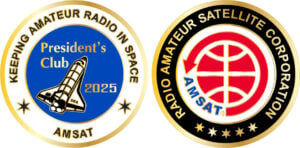
Join the AMSAT President’s Club today and help
Keep Amateur Radio in Space!
https://www.amsat.org/join-the-amsat-presidents-club/
Nine New TEVEL Satellites Scheduled for Launch
A group of satellites labeled as “TEVEL2” are on the launch manifest for the SpaceX ransporter 13 mission scheduled for launch on March 4. Designated as TEVEL2-1 through TEVE2-9, they are all listed as having a downlink frequency of 436.400 MHz. However, this frequency has not been coordinated with the International Amateur Radio Union (IARU).
One may assume that these satellites will operate in much the same manner as the first series of TEVEL satellites, launched in January of 2022 and now decayed from orbit. These satellites were activated individually and carried FM repeaters with the same 436.400 MHz downlink, and an uplink frequency of 145.970 MHz. However, there is no official word from the satellite sponsors as to their plans for this new series of satellites.
Yet another satellite on the Transporter 13 manifest is NILA, a 3U cubesat built by HEX20Labs and students of Marian Engineering College, both in India. The builders of this satellite requested a UHF downlink for 9600 bps GFSK/AX25 telemetry. However, the IARU declined the request because they deemed the project commercial, and not qualifying for use of amateur frequencies.
[ANS thanks Jan van Gils, PEØSAT, for the above information]
UVSQ-Sat NG Scheduled for Launch
Also among the satellites on the manifest for the SpaceX Rideshare 13 launch is the third of a series of French cubesats, named UVSQ-Sat NG — or “Next Generation.” The previous satellites in this series carried amateur radio FM transponders.
Specifically designed to observe essential climate variables, UVSQ-Sat NG is a 6U nanosatellite, meaning that it has the dimensions of six stacked unit cubes, each cube having a standard size of 10 centimetres by. Weighing only 10 kg, UVSQ-Sat NG represents a true concentrate of technology. The satellite is equipped with a sophisticated attitude determination and control system designed to meet a variety of scientific requirements related to the observation of essential climate variables. This addition distinguishes it considerably from its two predecessors, UVSQ-Sat and INSPIRE-Sat 7. In a study published in the journal Remote Sensing Journal, a team of researchers from the Atmospheres Laboratory, Space Observations (LATMOS – CNRS/Sorbonne University / UVSQ), in partnership with industry, described this new space mission as well as its scientific aims. The satellite is scheduled to be launched in 2025.
One of the objectives of UPSQ-Sat NG is to maintain the continuity of the Earth’s Radial Assessment studies initiated by the UVSQ-Sat and INSPIRE-Sat 7 satellites, launched in 2021 and 2023 respectively. The UVSQ-Sat NG mission also involves monitoring concentrations of greenhouse gases, such as carbon dioxide and methane, while analysing their links with infrared radiation emitted by the Earth.
In addition to the methods used to determine the components of the Earth’s Radial Balance sheet from the instruments of the UVSQ-Sat NG satellite, researchers detail the technologies used to extract information on atmospheric gas columns (CO2, CH4, O2, H2O) from data from the miniaturised infrared spectrometer that will be on board UPSQ-Sat NG.
Both scientific and innovative, this research project is primarily an educational tool, and is an exceptional educational platform for students who are actively involved in the design, implementation of the satellite structure, and the establishment of a satellite management and management centre. This programme aims to meet the requirements of enterprises and public bodies in terms of training, development of initial and continuous educational programmes, while at the same time increasing the attractiveness of these training courses. This is in order to ensure the acquisition of the key competences required for the emerging professions of France in 2030.
UVSQ-Sat NG is equipped with several instruments, including radiative sensors (thermopiles with carbon nanotubes) for monitoring incoming solar radiation and outgoing terrestrial radiation. A near-infrared spectrometer is also on board to evaluate atmospheric concentrations of greenhouse gases by making observations in the wavelength range of 1200 to 2000 nm.
In addition, UVSQ-Sat NG carries a high-definition camera designed to take images of the Earth in the visible spectrum. This NanoCam will facilitate the post-processing of spectrometer-based data by ensuring accurate geolocation of observed scenes. It will also offer the possibility of observing the Earth’s edge, thus giving an approximate estimation of the vertical temperature profile of the atmosphere.
A scientific paper published in the journal, Remote Sensing states that, “The Isispace VHF Receiver (RX) operates in the commercial frequency range of 148 to 150.5 MHz, and for amateur frequency coordination, it operates within the frequency range of 145.8 to 146.0 MHz. On the other hand, the Isispace VHF Transmitter (TX) covers the commercial frequency range of 400.15 to 402.0 MHz and, for amateur usage, it spans the range of 435.0 to 438.0 MHz. An audio transponder will also be used with the amateur radio community.”
However, no amateur frequencies have been coordinated with the International Amateur Radio Union (IARU) and no amateur operation has been announced.
[ANS thanks Remote Sensing and IARU for the above information]
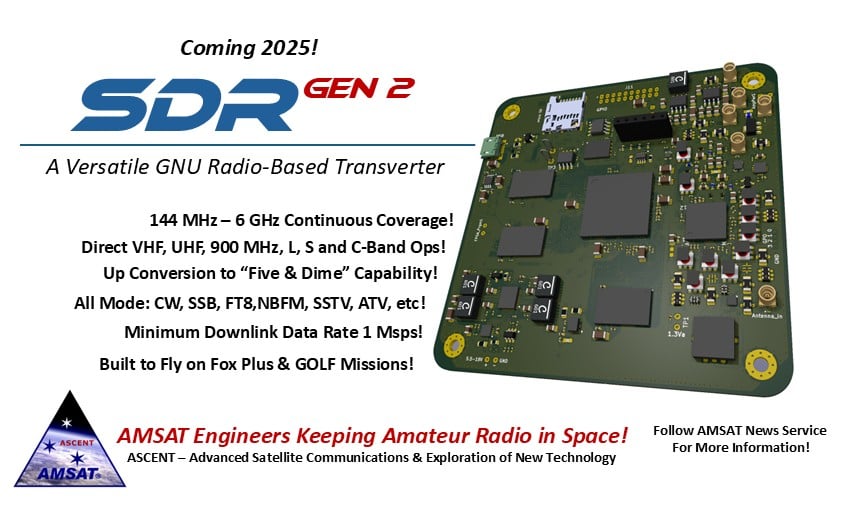
Intuitive Machines’ Lunar Lander Beams Back First Images of Earth
The Athena lunar lander manufactured by Houston, Texas aerospace company Intuitive Machines shared its first “selfies” from orbit after launching at 00:16 UTC on Thursday, Feb. 27 from the Kennedy Space Center in Florida.
The images released later Thursday show the six-legged Nova-C lander with Earth in the background. Intuitive Machines shared the photos within about 13 hours of the spacecraft launching to orbit aboard a SpaceX Falcon 9 rocket.
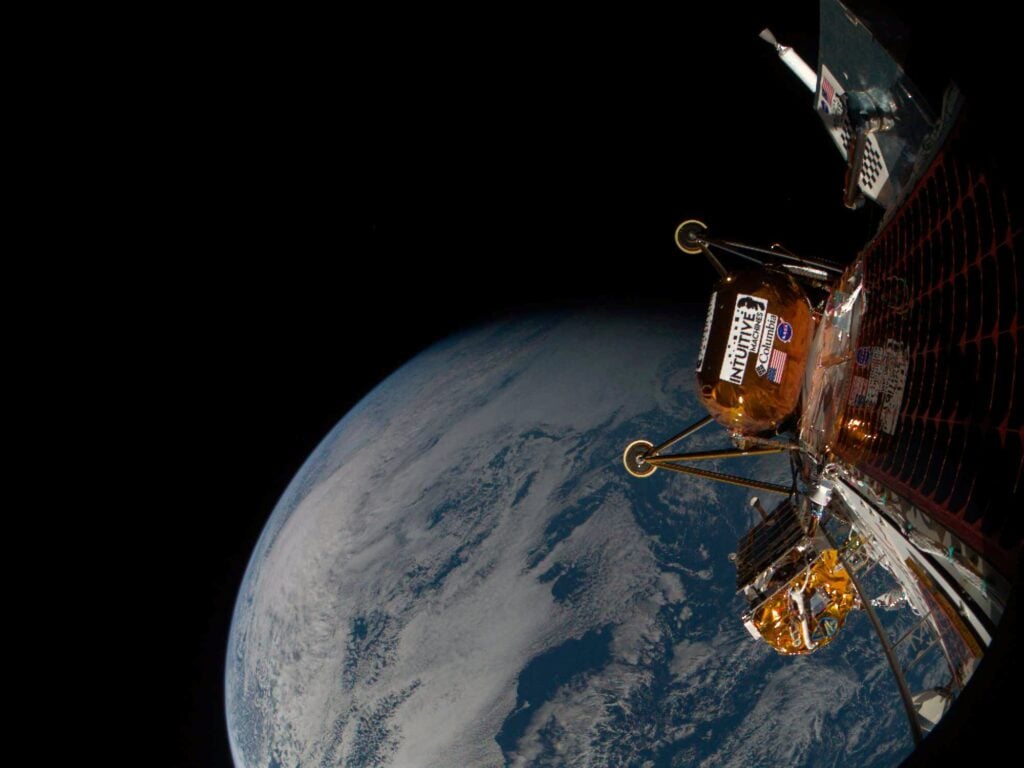
Intuitive Machines, the company that built and operates that lunar lander, shared the first images from orbit after launching from Florida. The craft is carrying a number of science instruments, including water-hunting technology for NASA. [Photo: © Intuitive Machines]
The Athena spacecraft, which is on a mission known as IM-2, is now one of two American-made uncrewed lunar landers on their way to the moon’s surface. Firefly Aerospace, also based in Texas, is operating its own spacecraft named Blue Ghost that is due to attempt a landing early Sunday after about a 45-day voyage.
NASA is the primary customer on both commercial spaceflights, which are due to study different regions of the moon’s surface to pave the way for astronauts to return as early as 2027 under the space agency’s Artemis program. The NASA campaign is treating the moon as a vital pit stop for spacefarers to pause and fuel up ahead of the first crewed missions to Mars.
If all goes to plan, Athena should be landing on the moon’s south pole on Thursday, March 6.
The IM-2 mission is targeting a landing near a plateau known as Mons Mouton, which would be even further south than Intuitive Machines’ first lander, Odysseus, which made history in February 2024. The mesa-like lunar mountain towers over a landscape carved by craters, including the Shackleton Crater – a cold, dark region where water ice and other volatile materials that turn easily into gas are thought to be abundant.
The main experiment onboard Athena is NASA’s PRIME-1 (Polar Resources Ice Mining Experiment-1). The dual instrument composed of both a drill and a mass spectrometer will excavate and measure lunar soil, known as regolith, to detect whether gases and accessible resources are present.
Water ice thought to be abundant in the region, once uncovered, could be extracted and used for drinking, breathing and as a source of hydrogen and oxygen for rocket fuel to make future expeditions to Mars possible, according to NASA.
Other objectives include testing a Nokia LTE 4G communications system and deploying a propulsive drone capable of hopping across the lunar surface.
NASA’s Lunar Trailblazer spacecraft, which launched as a rideshare on the Falcon 9, also began its own separate journey to lunar orbit to map the distribution of the different forms of water on Earth’s only natural satellite.
[ANS thanks Eric Lagatta reporting for USA Today for the above information]
SpaceX Delays Flight 8 of Starship
SpaceX has pushed the eighth test flight of its Starship megarocket back a few days.
Elon Musk’s company had been targeting Friday (Feb. 28) for Flight 8 of Starship, the biggest and most powerful rocket ever built. But that’s no longer the plan.
“Now targeting to launch Starship’s eighth flight test as soon as Monday, March 3,” SpaceX said in an X post early on Thursday morning (Feb. 27). No reason was given for the delay.
If all goes to plan, Starship will lift off from Starbase, SpaceX’s facility in South Texas, on Monday during a window that opens at 2330 UTC (5:30 p.m. local Texas time).
SpaceX will try for another “chopsticks” catch of Super Heavy, the booster — its third overall, if successful — and Ship, the upper stage, will attempt to deploy mock Starlink satellites on its suborbital trajectory.
Ship will again target a controlled splashdown off Western Australia. Eventually, SpaceX plans to snag the returning upper stage using the launch tower’s chopsticks as well, but the company isn’t ready to try that just yet.
[ANS thanks Space.com for the above information]
GridMasterMap Satellite Top 100 Rovers March 2025 Rankings
The March 2025 rankings for the Top 100 Rovers (Mixed LEO/MEO/GEO) in satellite operations, as determined by @GridMasterMap on Twitter, has been released. The ranking is determined by the number of grids and DXCC entities activated, taking into account only those grids where a minimum number of QSOs logged on the gridmaster.fr website have been validated by a third party. Grid numbers do not directly reflect the exact number of activations. Satellite operators are encouraged to upload their LoTW satellite contacts to https://gridmaster.fr in order to provide more accurate data.
Updated: 2025-02-28
| 1 | ND9M | 26 | KX9X | 51 | W7WGC | 76 | HB9GWJ |
| 2 | NJ7H | 27 | ON4AUC | 52 | N6DNM | 77 | PT2AP |
| 3 | JA9KRO | 28 | KG5CCI | 53 | JK2XXK | 78 | AA8CH |
| 4 | UT1FG | 29 | N5BO | 54 | EA4NF | 79 | PT9BM |
| 5 | N5UC | 30 | K8BL | 55 | SM3NRY | 80 | VE1VOX |
| 6 | DL6AP | 31 | KE4AL | 56 | JL3RNZ | 81 | FG8OJ |
| 7 | OE3SEU | 32 | KB5FHK | 57 | DF2ET | 82 | YU0W |
| 8 | WI7P | 33 | VE3HLS | 58 | XE1ET | 83 | KJ7NDY |
| 9 | DP0POL | 34 | PA3GAN | 59 | LU4JVE | 84 | KI7UXT |
| 10 | K5ZM | 35 | KI0KB | 60 | AA5PK | 85 | N6UTC |
| 11 | F5VMJ | 36 | JO2ASQ | 61 | KI7QEK | 86 | KB2YSI |
| 12 | N6UA | 37 | KI7UNJ | 62 | SP5XSD | 87 | AF5CC |
| 13 | HA3FOK | 38 | LA9XGA | 63 | F4DXV | 88 | WA9JBQ |
| 14 | WY7AA | 39 | F4BKV | 64 | AD7DB | 89 | N4DCW |
| 15 | N9IP | 40 | BA1PK | 65 | VE1CWJ | 90 | JM1CAX |
| 16 | W5PFG | 41 | VA3VGR | 66 | KE9AJ | 91 | K0FFY |
| 17 | LU5ILA | 42 | N7AGF | 67 | DL4EA | 92 | VE3GOP |
| 18 | DL2GRC | 43 | VK5DG | 68 | N8RO | 93 | N0TEL |
| 19 | AK8CW | 44 | XE3DX | 69 | KM4LAO | 94 | KG4AKV |
| 20 | AD0DX | 45 | KE0WPA | 70 | VA7LM | 95 | W8MTB |
| 21 | N4AKV | 46 | PR8KW | 71 | BG7QIW | 96 | CU2ZG |
| 22 | AD0HJ | 47 | KE0PBR | 72 | M1DDD | 97 | VE7PTN |
| 23 | WD9EWK | 48 | K7TAB | 73 | W8LR | 98 | DK9JC |
| 24 | ND0C | 49 | EB1AO | 74 | W1AW | 99 | K6VHF |
| 25 | DJ8MS | 50 | AC0RA | 75 | N4UFO | 100 | VE6WK |
[ANS thanks @GridMasterMap for the above information]
AMSAT Remove Before Flight Key Tags Now Available
Yes, These are the Real Thing!
Your $20 Donation Goes to Help Fly a Fox-Plus Satellite
Includes First Class Postage (Sorry – U.S. Addresses Only)
Order Today at https://www.amsat.org/product/amsat-remove-before-flight-keychain
VUCC Standings February 2025
Here are the firsts from the new VUCC holders for Feb 2025:
N5YIZ is first VUCC Satellite holder from EL08
KH6WI/W9 (EN54) is first VUCC Satellite holder from EN54
W4BB is first VUCC Satellite holder from FM04
G4BWP is first VUCC Satellite holder from JO02
SV8CKM is first VUCC Satellite holder from KM08
SV2DSJ is first VUCC Satellite holder from KN10
ER1KW is first VUCC Satellite holder from Moldova and KN46
RA3LAS is first VUCC Satellite holder from KO85
BG6HXD is first VUCC Satellite holder from OM83
BI8FFH is first VUCC Satellite holder from PM06
[ANS thanks Jon Goering, N7AZ, for the above information.]
Changes to AMSAT-NA TLE Distribution for February 28
Two Line Elements or TLEs, often referred to as Keplerian elements or keps in the amateur community, are the inputs to the SGP4 standard mathematical model of spacecraft orbits used by most amateur tracking programs. Weekly updates are completely adequate for most amateur satellites. TLE bulletin files are updated daily in the first hour of the UTC day. New bulletin files will be posted immediately after reliable elements become available for new amateur satellites. More information may be found at https://www.amsat.org/keplerian-elements-resources/.
The following satellite has been added to this week’s AMSAT TLE distribution:
HADES-R (SO-124) NORAD Cat ID 62690
The following satellites have been deleted from this weeks AMSAT TLE distribution:
SO-120 NORAD Cat ID 56992 Decayed from orbit on or about 11 February 2025
XW-2C NORAD Cat ID 40906 Decayed from orbit on or about 16 February 2026
[ANS thanks Joe Fitzgerald, KM1P, AMSAT Orbital Elements Manager for the above information]
ARISS NEWS
Amateurs and others around the world may listen in on contacts between amateurs operating in schools and allowing students to interact with astronauts and cosmonauts aboard the International Space Station. The downlink frequency on which to listen is 145.800 MHz worldwide.
FAILED
Royal Moroccan Air Academy, Marrakech, Morocco, direct via CN8ERA
The ISS callsign was scheduled to be OR4ISSThe scheduled crewmember was Sunita Williams, KD5PLB
The ARISS mentor is IN3GHZ
Contact was not successful for: Fri 2025-02-21 11:12:20 UTC 72 degrees maximum elevation
ARISS is working to determine what exactly happened.
UPCOMING
No additional contacts are scheduled in the immediate future.
 The crossband repeater continues to be active (145.990 MHz up {PL 67} & 437.800 MHz down). If any crewmember is so inclined, all they have to do is pick up the microphone, raise the volume up, and talk on the crossband repeater. So give a listen, you just never know.
The crossband repeater continues to be active (145.990 MHz up {PL 67} & 437.800 MHz down). If any crewmember is so inclined, all they have to do is pick up the microphone, raise the volume up, and talk on the crossband repeater. So give a listen, you just never know.
The packet system is also active (145.825 MHz up & down).
As always, if there is an EVA, a docking, or an undocking; the ARISS radios are turned off as part of the safety protocol.
Note, all times are approximate. It is recommended that you do your own orbital prediction or start listening about 10 minutes before the listed time.
The latest information on the operation mode can be found at https://www.ariss.org/current-status-of-iss-stations.html
The latest list of frequencies in use can be found at https://www.ariss.org/contact-the-iss.html
[ANS thanks Charlie Sufana, AJ9N, one of the ARISS operation team mentors for the above information]
Upcoming Satellite Operations
Kyle Chavis, WA4PGM, will be QRV from St. Lucia from 26 Feb through 4 Mar as J68HZ. OPERATION SUSPENDED DUE TO EXTREME WEATHER. Keep an eye on hams.at for additional info.
Tom Gaines, KB5FHK, plans operations from EM62 and from EM72 on March 8 & 9. See hams.at for details.
A growing number of satellite rovers are currently engaged in sharing their grid square activations on https://hams.at. By visiting the website, you gain easy access to comprehensive information about the operators responsible for activating specific grid squares. Additionally, you have the ability to assess the match score between yourself and a particular rover for a given pass, while also being able to identify the upcoming satellite passes that are accessible from your location.
[ANS thanks Ian Parsons, K5ZM, AMSAT rover page manager, for the above information]
AMSAT Ambassador Activities
AMSAT Ambassadors provide presentations, demonstrate communicating through amateur satellites, and host information tables at club meetings, hamfests, conventions, maker faires, and other events.
March 1, 2025
Irving Hamfest
Betcha Bingo Hall
2420 W. Irving Blvd.
Irving, TX 75014
http://irvingarc.org/hamfest
N5HYP
March 22, 2025
Midwinter Madness Hamfest
Buffalo Civic Center
1306 County Rd 134
Buffalo MN 55313
https://k0ltc.org/midwinter-madness/
KØJM, ADØHJ, KEØPBR
April 4 – 5, 2025
Southeastern VHF Conference 2025
Quality Inn
3095 Wilma Rudolph Blvd
Clarksville, TN 37040
W4FCL
April 5, 2025
RARSfest
Jim Graham Building
NC State Fairgrounds
Youth Center Drive, Gate 5
Raleigh NC
https://www.rarsfest.org/index.php
K4EB, N4AEW, W1DCM, KK4HG, N4HF
[ANS thanks Bo Lowrey, W4FCL, Director – AMSAT Ambassador Program, for the above information]
Satellite Shorts From All Over
+ A total lunar eclipse will happen overnight between March 13 and March 14, 2025. It will be the first total lunar eclipse visible anywhere in the world since November 2022, and will also be the first of three happening between 2025 and 2026. During totality — the peak phase of the eclipse — the moon will turn a deep reddish-orange hue, earning it the nickname “Blood Moon.” This effect happens because Earth’s atmosphere scatters shorter wavelengths of light from the sun while allowing longer wavelengths of red and orange hues to be refracted into Earth’s umbra (the darkest part of Earth’s shadow). When these longer wavelengths strike the moon, they can make it appear red, similar to how the sky appears red during sunrise and sunset. Totality will last for an impressive 65 minutes, beginning at 0726 UTC on March 14. (ANS thanks Space.com for the above information.)
+ GOES-19 will replace GOES-16 as the operational GOES-East weather satellite on April 4, 2025. Between 17 March 2025 and 1 April 2025, the GOES-16 satellite will undergo a minor East/West station-keeping maneuver, drifting from its current operational longitude of 75.2°W to a new operational longitude of 75.5°W. During this time, the GOES-East HRIT/EMWIN Broadcast will continue from GOES-16. This 0.3°W shift is expected to induce minimal change in received signal strength for ground stations employing properly aligned small aperture antennas. GOES-19 will also begin its drift maneuver– drifting from 89.5°W to 75.2°W ~1 deg/day drift. On April 1, GOES 19 arrives at 75.2°W, then GOES-19 Post-Drift Product Checkout at new location commences. (ANS thanks Carl Reinemann, usradioguy.com, for the above information.)
+ In less than 48 hours the HB9RG Trophy of the AMSAT-HB will start. Further information has been added to the website, including the form for entering QSO data as well as provisional activity planning for the bonus day on March 10th: https://www.amsat-hb.org/hb9rg_trophy/hb9rg_trophy_2025_-_distance QSO with station HB9RG will be rewarded with an additional 500 points on March 10th. Anyone who only wants to contact the HB9RG station on March 10 is invited to do so. Every QSO on March 10 will be confirmed with an anniversary QSL card. Share your activities for the HB9RG Trophy with us via X, Bluesky and Facebook. Use the hashtag #HB9RGTrophy. (ANS thanks Michael Lipp, HB9WDF, President AMSAT-HB, for the above information.)
Join AMSAT today at https://launch.amsat.org/
In addition to regular membership, AMSAT offers membership to:
* Societies (a recognized group, clubs or organization).
* Primary and secondary school students are eligible for membership at one-half the standard yearly rate.
* Post-secondary school students enrolled in at least half time status shall be eligible for the student rate for a maximum of 6 post-secondary years in this status.
* Memberships are available for annual and lifetime terms.
Contact info [at] amsat.org for additional membership information.
73 and remember to help Keep Amateur Radio in Space!
This week’s ANS Editor, Mark Johns, KØJM
mjohns [at] amsat.org
ANS is a service of AMSAT, the Radio Amateur Satellite Corporation, 712 H Street NE, Suite 1653, Washington, DC 20002
